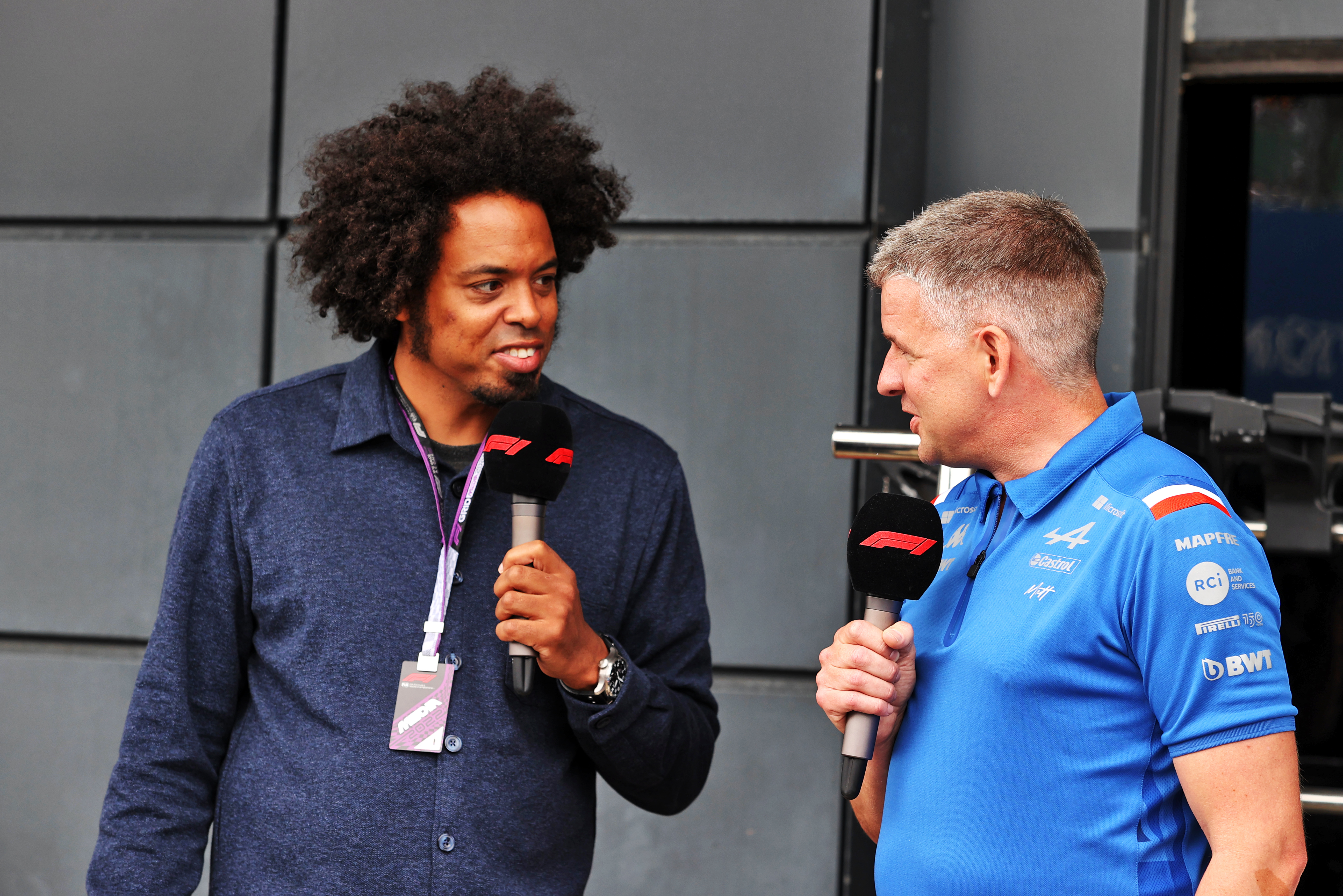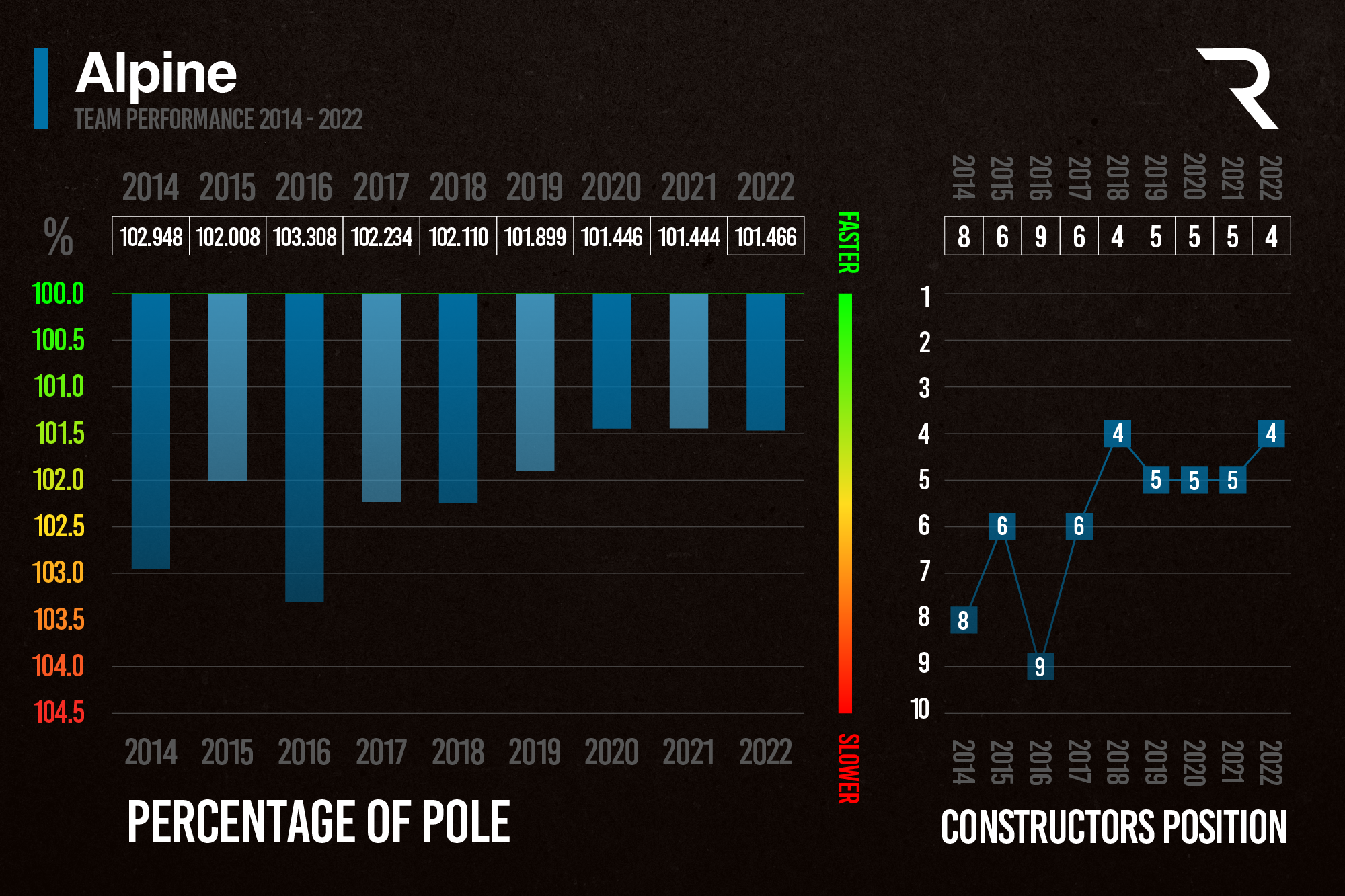Up Next

At the end of last season, Alpine Formula 1 team boss Otmar Szafnauer set a clear target for 2023: “We need to be closer to third than fifth.”
For a team that edged out McLaren for fourth by just 14 points and was 342 points behind the third-placed team (Mercedes), this is a hugely ambitious target.
But it’s also the only acceptable aim that Alpine can set.
As F1’s ‘other’ works team it has potential that its recent midfield rivals lack. Eventually, Alpine’s aim is to be on a par with Red Bull, Ferrari and Mercedes. And Red Bull is ‘only’ a de facto works team. So, there’s an argument that the Renault F1 entry is one of only three with this kind of opportunity.
Having finally clawed its way back to being ‘best of the rest’, Alpine can only set its sights on further progress. To be swallowed up again by McLaren or even Aston Martin would be a disappointing backwards step.
“We have to take a step closer to being able to win a championship,” said Szafnauer last November.
“That 100-race plan [set by Alpine CEO Laurent Rossi] started at the beginning of this year, so it’s less than 80 [races] from now on.
“So, for us to be able to do that, we’re right now fourth, marginal to fifth, we need to do the same but be closer to third next year.
“We need to be closer to third than we are fifth next year. So even if we stay fourth, we’ve got to make progress.”

There is some low-hanging fruit for Alpine to achieve that. Its obvious Achilles’ heel from 2022 – reliability – prevented Alpine from finishing well clear of McLaren. But even with all the lost points, it would have still been a long way from the goal of being closer to third.
But curing reliability is the first goal. “If we just do that, and the performance level stays relatively the same, we should be further up the road,” said Szafnauer.
That is still too simple though. F1 doesn’t work that way. So, said Szafnauer, “we also want to take a step in performance”. Tonight, at the launch of Alpine’s new car which has already been shaken down, we will see the first signs of what has changed on the A523 to achieve that.
There were a lot of good things about Alpine’s 2022 car. ‘Integration’ was a buzzword around the team when it launched 12 months ago and then through the season, with extensive work undertaken on items like heat rejection, volumetric packaging and suspension stiffness to maximise the performance of the chassis and power unit and crucially give Alpine flexibility to evolve its concept over time.
This was the brainchild of technical director Matt Harman (below, right) and that came as no surprise given his job prior to joining Renault was head of powertrain integration at Mercedes. He knows what a world championship-winning works team needs to do.

Harman talked of trying to have a car that was “very stable” early on. Alpine aimed for aerodynamic characteristics that weren’t too peaky, which is why it didn’t suffer too much bouncing.
It seemed to create a car that was well-understood, and therefore responded well to development. Alpine had two quite big floor steps last season that worked well, and a good number of detail tweaks too.
A less aggressive approach with the overall underfloor aerodynamics gave Alpine something usable and improvable. The question is, has it imposed a limit? Or will the A523 have design tweaks that give Alpine the ceiling required to move closer to the top three – without sending into a potential porpoising spiral in the pursuit of more performance?
It’s logical that Alpine will have tried to adopt successful solutions from other teams as well as further explored its own development directions in a way that wasn’t possible in-season. But what changes there are we may only discover next week in testing, or the first race, let alone at the launch tonight.
Much of what will be different may well be concealed – either through smoke and mirrors (not showing the real car) or because there are significant changes under the surface.

For example, the car should be lighter. It is a “must”, Harman said last year, to get down to the weight limit for the A523. Last year Alpine effectively U-turned on an early-season intention to do that during 2022 – it got to a level it was willing to accept in the short-term as it decided it would be better to prioritise weight-saving items in the basic design of the 2023 car.
With a revised cooling system tipped to be part of that, we might not see the exact change but we could see an impact of it with revised engine cover bodywork, as has already been hinted at with leaked shakedown images from earlier in the week.
Those images may also have tipped us off to a pushrod rear suspension change. It would at least tally with another Harman comment from late last year, when he indicated that revised suspension geometries could change the look of the 2023 car.
“We’ve looked quite closely at the mechanical backbone, or skeleton,” he said.
“We’re putting quite a lot in there to give the aerodynamics team that platform. That’s why we’ve been able to upgrade the car and a lot of areas so quickly, because there’s nothing in the way, everything has been put in the correct position to make sure that we give them the real estate they need.
“Our upgrades are just a part that we’re upgrading, not everything else around it to make it right.
“We’ve done a whole lot more of that to give the next level of freedom for next year around rear suspension parts and lots of different areas.
“It’ll be interesting when you see the car. It’s the same regulation, but it will be quite different.”







